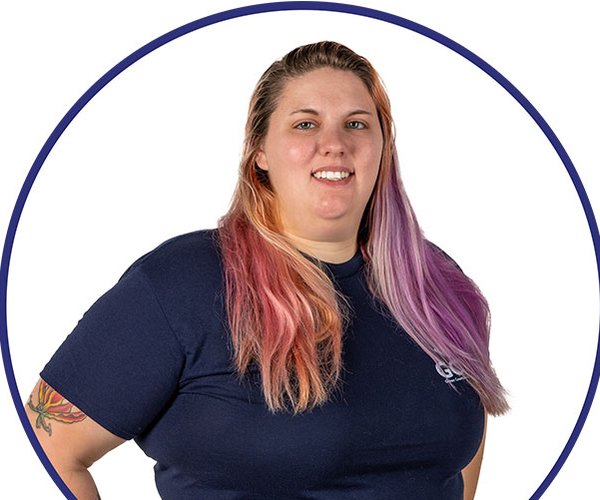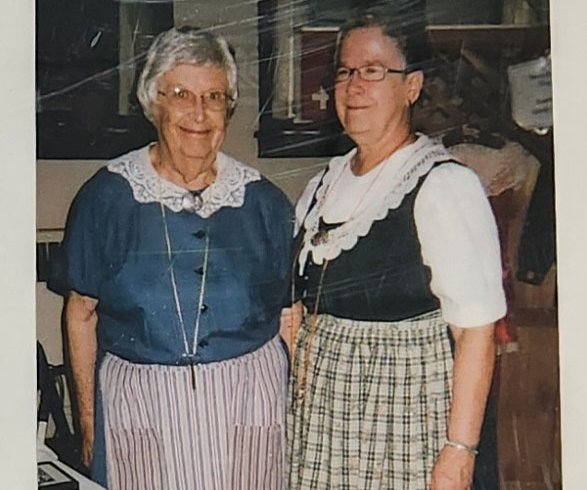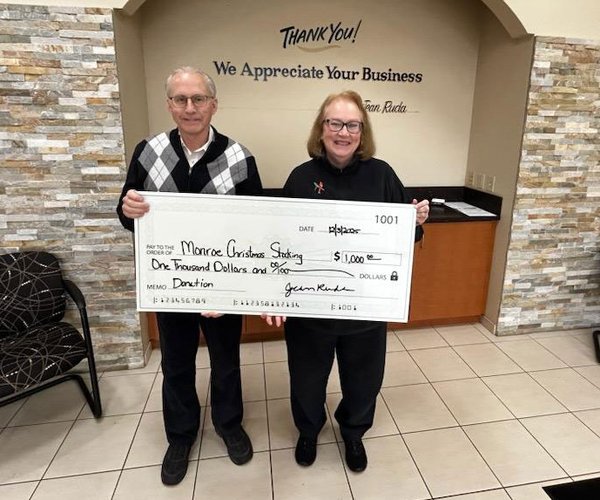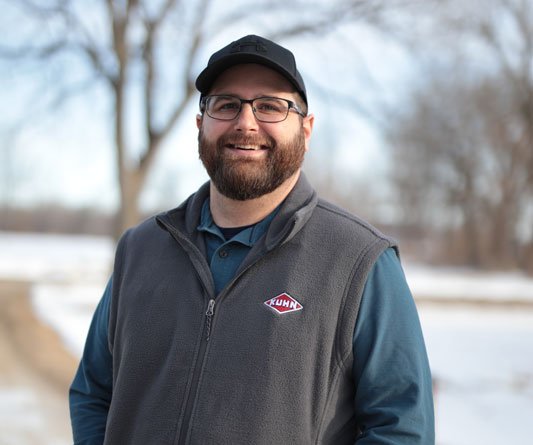By Nicole Krebs
For the Times
MONROE — Ryan Mathiason has a bit of a unique hobby. He makes crossword puzzles.
Ryan began solving them during the 2020 pandemic before deciding to try making some himself and finding a website to help. He started creating puzzles in 2021 and really didn’t have any idea what he was doing at first — there were nonexistent words in his first attempt — but he slowly learned how to create themes and use words commonly acceptable for crossword puzzles.
“I constantly have some kind of puzzle in progress, whether I am trying to come up with a theme, finishing the grid of a puzzle, or waiting to write clues,” he said.
He has had some of his crosswords published in newspapers, with his first being published on Oct. 30, 2023, by Universal. But there’s one publication he’s always dreamt of: having a crossword published in the New York Times.
That dream has finally come true.
On Monday, March 31, 2025, his very own crossword puzzle was published in the New York Times.
“It was amazing to finally receive an email that I would be published in the New York Times,” Ryan said. “That was my 40th submission, and after so many rejections, it felt great to confirm that my puzzles had continually improved and were finally up to the New York Times’ level.”
He is the 77th known teenager to be published by the New York Times in the over 80 years they have been releasing daily crosswords.
There are many tasks that go into creating a successful crossword puzzle, Ryan said. Having purchased software and a word list helps a lot in guiding him through the process and making it quicker than if he were doing it entirely from scratch. The first thing to figure out is if it will be a themed crossword.
“I first try to think of an in-the-language phrase that could explain the wordplay I am doing,” Ryan said. “For example, in a June 2024 puzzle that was published… [it] had a ‘revealer’ of IT’S GOING DOWN, clued as a piece of smack talk or, read differently, a description of the starred clues’ answers.”
Those starred clues’ answers were the three longest down entries that had the initials I and T, such as words like Inner Tube and Irish Terrier. Once he has developed a theme, he begins placing the answers into the grid while adding black squares around the theme answers.


“If one of the theme answers has a J, I would try to place a black square above the J because more words start with a J than end with J.”
He also has to keep in mind the crossword rules of maintaining rational symmetry, which means only including words that are three letters or longer and making sure there aren’t too many black squares on the grid. Next is to put other words into the puzzle using a scored word list with words that his software recommends based on the letter patterns forced by the theme. These words need to be common enough for people to know. This process can go rather quickly or take a while, depending on how constraining the theme answers are.
The final step is writing clues, which is paramount from the perspective of the person solving the puzzle, as clues are the only things they see when opening a crossword puzzle.
“Having good clues that challenge a solver enough but aren’t impossible is important,” Ryan said. “Trying to find wordplay that will fairly trick your solvers until they realize the answer is the goal for constructors.”
He tries to keep the themes of his puzzles general with bits of sports, history, pop culture, etc., given that when published, the solvers have different knowledge bases and puzzle makers want to reach as many as possible to make it enjoyable for a wider range of solvers.
He also explained how the time it takes to fully make a crossword puzzle depends on many different factors.
“Coming up with a theme can take weeks of scouring word lists and sources to find just one more word that fits the constraint you’re trying to satisfy,” he said. “Gridding follows a similar pattern. If your theme isn’t particularly constraining, there are times when I can successfully fill a grid in about an hour. But if I’m crafting a Sunday-sized grid or a grid with high theme density with many difficult letters to work around, it can take weeks to finally settle on a grid that I’m satisfied with.”
Writing clues can also be a lot of work. It can be done quickly, but needs to be meticulous.
“When cluing, it is best to try and find ways to write fresh clues that haven’t been done before by playing with the English language,” Ryan said. MONROE — Ryan Mathiason has a bit of a unique hobby. He makes crossword puzzles.
Ryan began solving them during the 2020 pandemic before deciding to try making some himself and finding a website to help. He started creating puzzles in 2021 and really didn’t have any idea what he was doing at first — there were nonexistent words in his first attempt — but he slowly learned how to create themes and use words commonly acceptable for crossword puzzles.
“I constantly have some kind of puzzle in progress, whether I am trying to come up with a theme, finishing the grid of a puzzle, or waiting to write clues,” he said.
He has had some of his crosswords published in newspapers, with his first being published on Oct. 30, 2023, by Universal. But there’s one publication he’s always dreamt of: having a crossword published in the New York Times.
That dream has finally come true.
On Monday, March 31, 2025, his very own crossword puzzle was published in the New York Times.
“It was amazing to finally receive an email that I would be published in the New York Times,” Ryan said. “That was my 40th submission, and after so many rejections, it felt great to confirm that my puzzles had continually improved and were finally up to the New York Times’ level.”
He is the 77th known teenager to be published by the New York Times in the over 80 years they have been releasing daily crosswords.
There are many tasks that go into creating a successful crossword puzzle, Ryan said. Having purchased software and a word list helps a lot in guiding him through the process and making it quicker than if he were doing it entirely from scratch. The first thing to figure out is if it will be a themed crossword.
“I first try to think of an in-the-language phrase that could explain the wordplay I am doing,” Ryan said. “For example, in a June 2024 puzzle that was published… [it] had a ‘revealer’ of IT’S GOING DOWN, clued as a piece of smack talk or, read differently, a description of the starred clues’ answers.”
Those starred clues’ answers were the three longest down entries that had the initials I and T, such as words like Inner Tube and Irish Terrier. Once he has developed a theme, he begins placing the answers into the grid while adding black squares around the theme answers.
“If one of the theme answers has a J, I would try to place a black square above the J because more words start with a J than end with J.”
He also has to keep in mind the crossword rules of maintaining rational symmetry, which means only including words that are three letters or longer and making sure there aren’t too many black squares on the grid. Next is to put other words into the puzzle using a scored word list with words that his software recommends based on the letter patterns forced by the theme. These words need to be common enough for people to know. This process can go rather quickly or take a while, depending on how constraining the theme answers are.
The final step is writing clues, which is paramount from the perspective of the person solving the puzzle, as clues are the only things they see when opening a crossword puzzle.
“Having good clues that challenge a solver enough but aren’t impossible is important,” Ryan said. “Trying to find wordplay that will fairly trick your solvers until they realize the answer is the goal for constructors.”
He tries to keep the themes of his puzzles general with bits of sports, history, pop culture, etc., given that when published, the solvers have different knowledge bases and puzzle makers want to reach as many as possible to make it enjoyable for a wider range of solvers.
He also explained how the time it takes to fully make a crossword puzzle depends on many different factors.
“Coming up with a theme can take weeks of scouring word lists and sources to find just one more word that fits the constraint you’re trying to satisfy,” he said. “Gridding follows a similar pattern. If your theme isn’t particularly constraining, there are times when I can successfully fill a grid in about an hour. But if I’m crafting a Sunday-sized grid or a grid with high theme density with many difficult letters to work around, it can take weeks to finally settle on a grid that I’m satisfied with.”
Writing clues can also be a lot of work. It can be done quickly, but needs to be meticulous.
“When cluing, it is best to try and find ways to write fresh clues that haven’t been done before by playing with the English language,” Ryan said.





